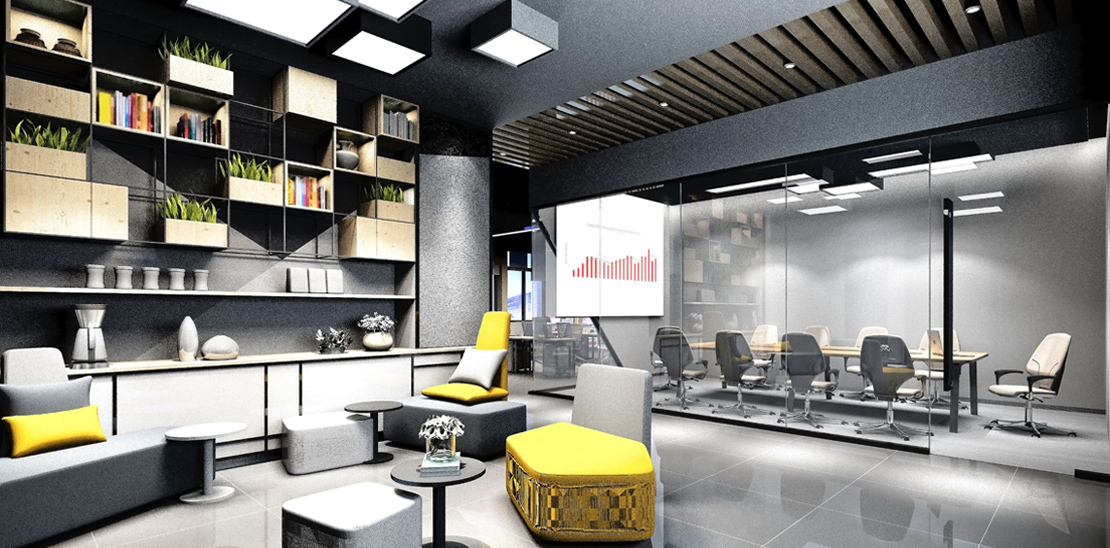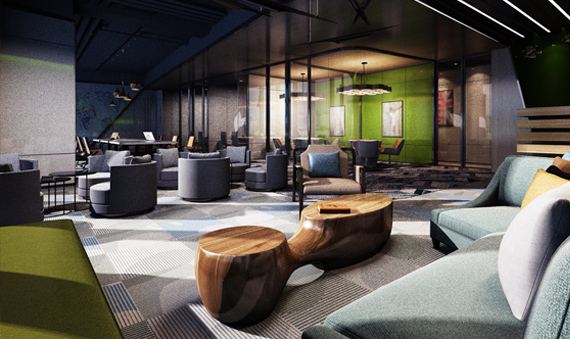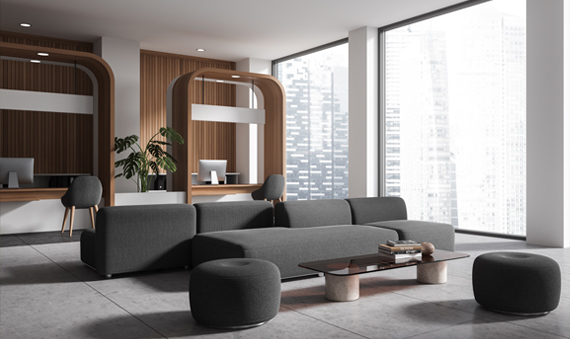

Currently, the land in urban areas is becoming day-by-day limited and people are shifting towards high rises. People living in high rises is an ongoing trend and those who are living there often find it difficult to cope with living in smaller spaces. These high rises are full of smaller spaces as they can accommodate just to fit as many as they can. Apart from this, as the real estate market is much costlier and is continuously going up in coming years, people typically are used to buying small spaces and homes because of their reasonable prices. However, it seldom feels claustrophobic and out of space when adding new items to the lot. Understand that even a bigger space with too much furniture in it can offer a condensed look of the place.
However, if you follow contemporary interior design trends, it’s now common knowledge that spaces have become as valuable as the design itself. As a result, the difficulty of an ideal outcome out of a smaller living space is now a creative canvas for designers. However, appropriate and creative interior design strategies can allow these small spaces to transform into more elegant and functional spaces. So, in the context of smaller living spaces, this blog will outline and demystify some creative design strategies to maximize these spaces.
Understanding your space is the first step to maximising a smaller space. All you need to do at this stage is evaluate the physical space of the room. Creating this evaluation can help you reimagine the space, along with the essential adjustments and changes. But let this maximisation approach be aligned with your lifestyle; otherwise, it will create potential problems in regard to the occupant's daily routine. The priority shouldn't just go to adding items that fit the space, but rather make a space that assists your needs, keeping up with your exclusive standard of living. So basically, maximising the space without considering the living standard and routine can adversely affect your daily life.
For smaller living spaces, therefore, the idea should be to add furniture that offers smart usability. For example, you can seek help by installing foldable desks, Murphy beds, or extendable dining tables. This is because such furniture can be used when needed and can be folded away or hidden when not in use. So smart features in modern furniture that are space-saving become very useful for the maximum use of our small home spaces.


When it comes to colouring a space, you may be fond of some specific palettes. But, this is where expert opinion takes the stage. Interior design specialists always suggest painting your walls with light hues if you want to make your rooms appear bigger. Thus, this same idea can be applied to maximising smaller areas. The logic behind the use of light shades is that it helps to reflect more light into your room so that more areas of the room are visible, making it look bigger. Also, use colour tones that are on the softer side for a similar visual illusion of a larger space. These two tactics are widely used for smaller spaces.
On the other hand, it would be foolish to overlook the influence of strategic lighting. Cooler lights make a room look overfilled, while warmer lighting arrangements can declutter such a perception. So, this concept can be employed for smaller spaces to make it look bigger. The same logic of light reflection also works in such a situation. Let the colours and lights play their game across the room and do the trick for the smaller space.
Installing mirrors hanging on your small spaces wall can help with making the room look bigger. Mirrors, in essence, capture and reflect light throughout the room. You may either go with a number of smaller ones or hang one large mirror exactly opposite the windows of your room. The principle for a mirror is that it creates one long line of sight that enhances, in the end, the reflection of light around the entire room. And, yes, it is a fact that the lighter your room is, the bigger it will appear and feel. So, this too is an effective way to maximize the look of your smaller space.
More often, storage is identified as the biggest issue in a smaller space. But, such an issue can be transformed into an innovative opportunity. Modern designers are capable of crafting new and creative storage solutions, which are fundamentally pragmatic and appealingly pleasing. Storage solutions like built-in closets floating shelves or even storage areas under the bed are in trend and use overlooked areas of a room to give place for every item. Considering your own lifestyle and space requirements, designers can fashion inventive storage solutions that maximise the smaller space. This is one of the lucrative strategies to make your living room look bigger than before.
In the majority of the cases, it can be observed that smaller spaces come with a higher ceiling than usual. Well, naturally you can't use this additional space on the ceiling until to come across a smart and creative designer. A wonderful approach to use this additional ceiling space is by installing a loft. Designers with their creativity can manufacture a beautiful loft that effectively utilises the extra space on the ceiling. You can use this loft as a corridor or even as a compact space for storage or reading.
Conventional door structures acquire more space when the door is open, taking up a significant portion of your room. But, worry not. Advanced and sturdy sliding doors are here to solve your problem. Sliding doors are excellent space savers. Not only do they save more space, but also look stylish, giving it a more modern look.
To conclude, it is apparent that the quest to make a small space bigger takes a resourceful combination of innovativeness, personalisation, and functionality. Depending on your personal choices and space requirements, the highlighted tips can effectively serve your purpose of making the best use of your smaller space.